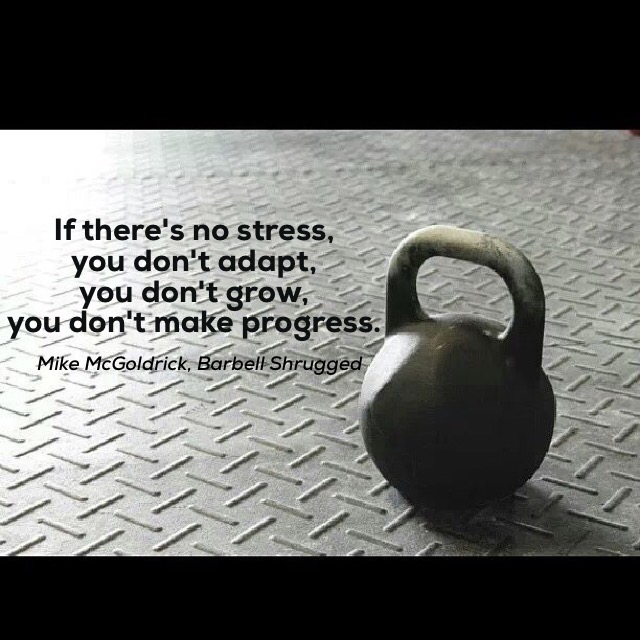Let me start by stating that I am not a medical professional and what I’m about to say is based on my opinion as well as articles written by qualified folks covering the subject.
If you’re like me, you’ve probably had well meaning friends or family members express concern over how much or how hard you train. “You’re not 25 anymore. You need to be very careful.” I’ve heard that many times. And for ammunition, these folks love to discuss the high profile deaths or health scares that have happened to some seriously fit athletes.

My husband (who is actually very supportive, but it’s a running joke between us) likes to refer to Jim Fixx, famed author of “The Complete Book of Running” which was a huge bestseller back in the late 70’s. Jim Fixx is often credited with jump starting the recreational exercise movement and popularized the idea of the “runner’s high”. He made public appearances on TV shows during which he extolled the virtues of running and how physical exercise could increase life expectancy. He went on to write three more books, all focused on the benefits of exercise and healthy living. Unfortunately, Jim Fixx died in 1984 when he was only 52. His death occurred during his daily run and shocked the fitness community. How could a man so vibrant and fit die so young? And from a heart attack? Isn’t cardiovascular exercise supposed to make your heart stronger?
More recently, Bob Harper, a young-looking, 55 year old, super-fit trainer and health expert best known for his role as coach on “The Biggest Loser”, suffered a massive heart attack. Apparently he technically died before being saved by some fast-acting doctors who happened to be on site. The doctors used CPR and defibrillators before paramedics arrived. Harper is now recovering well after being in a coma for two days.
So, what’s up? How is it that super fit people can suffer from heart attacks or even die at a young age? Are our friends and family correct? Do we need to back off of our training to avoid these consequences? When you dig beneath the headlines, you’ll quickly discover that the answer is no. Training is good for you and incredibly important, especially as we age.
Let’s go back to the Jim Fixx story. Fixx started running in 1967 when he was 35. He was overweight and a heavy smoker, smoking 2 packs per day. By the time “The Complete Book of Running” was published, he’d quit smoking and lost 60 pounds. Fixx’s heart attack was a result of severe atherosclerosis and his autopsy showed he had one coronary artery that was blocked 95%, one that was blocked 85% and a third that was blocked 70%. In 1986 an exercise physiologist, Kenneth Cooper, published an inventory of the risk factors that might have contributed to Fixx’s death. After extensive review of his autopsy results and medical records and after interviewing friends and family, Cooper concluded that Fixx was genetically predisposed to heart disease. His father had died of a heart attack at 43 after suffering an initial one at 35. Jim Fixx had a congenitally enlarged heart and prior to taking on a more healthy lifestyle, he was quite unhealthy
Bob Harper suffered a heart attack commonly known as a “widow-maker” – a blockage of the left coronary artery which is responsible for supplying blood to large areas of the heart. A blockage of this artery often results in a massive attack that can lead to very sudden death. Survival rates are low. Similar to Jim Fixx, it appears that Harper may have been genetically predisposed to heart disease as he says his mother died from a heart attack at a relatively young age. Unfortunately, Harper also says that he ignored some important warning signs, including fainting during a workout, leading up to the attack.
Now let’s go back to the original question. Is training dangerous for us as we age? The answer appears to be no. Study after study shows that physical exercise improves cardiovascular health and prolongs life. Even if you have a genetic risk, exercise and maintaining a level of fitness can help lower your risk and your ability to recover well should something happen. Doctors believe that Bob Harper’s level of fitness helped him to survive what would’ve killed many other people. And while no amount of exercise and healthy living can guarantee a disease free existence, there are countless examples of doctors stating that their patients have been able to more effectively fight through traumatic diseases such as Cancer and Diabetes because they were strong and healthy as a result of their lifestyle.
The bottom line is, keep on training! But be smart about it. Find out as much as possible about your genetics and family history. If you can, get tested for all basic health markers and especially heart health. Remember that nutrition, stress management and recovery are a huge part of overall health. And most importantly, don’t be hard headed and ignore the warning signs. Listen to your body. Bob Harper says he is kicking himself for ignoring signs which he now realizes were pretty obviously pointing towards trouble. We all want to be savage but we also need to be realistic. Here are some of the more common early signs of heart trouble:
- Chest pain or a full or squeezing sensation
- Pain or discomfort in other parts of the upper body (one or both arms, back, neck, jaw…)
- Shortness of breath
- Cold sweat, nausea or lightheadedness
- Vomiting
- Upper middle abdomen discomfort (usually more of a heaviness than sharp pain)
- Heartburn or indigestion
- Upper back pain
Train smart and stay savage!







